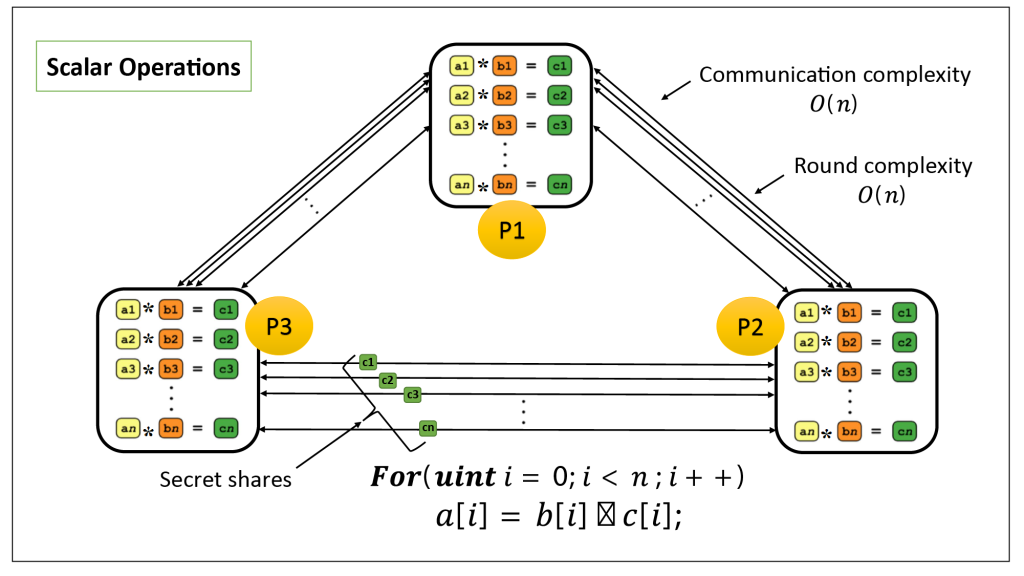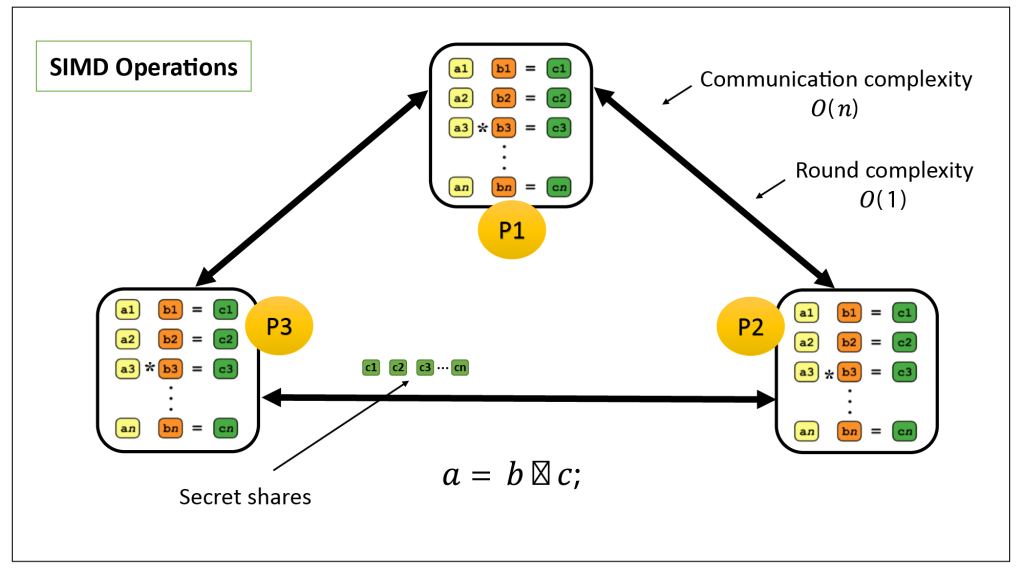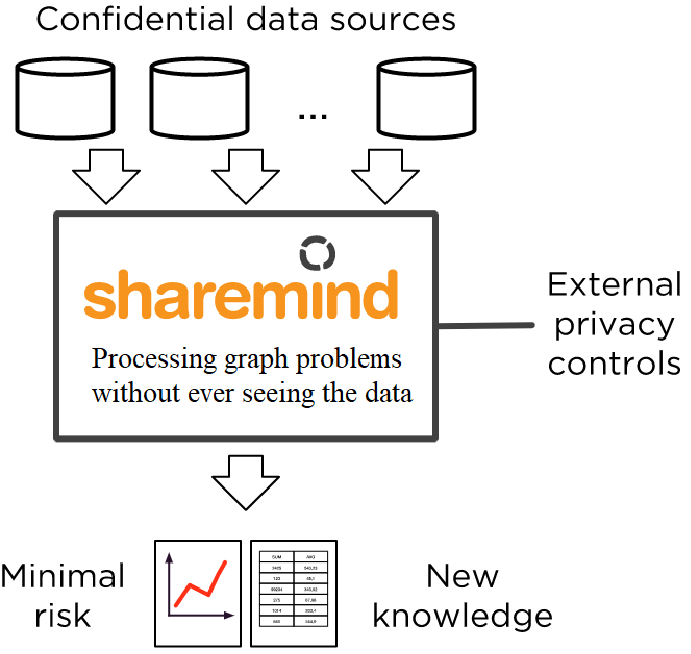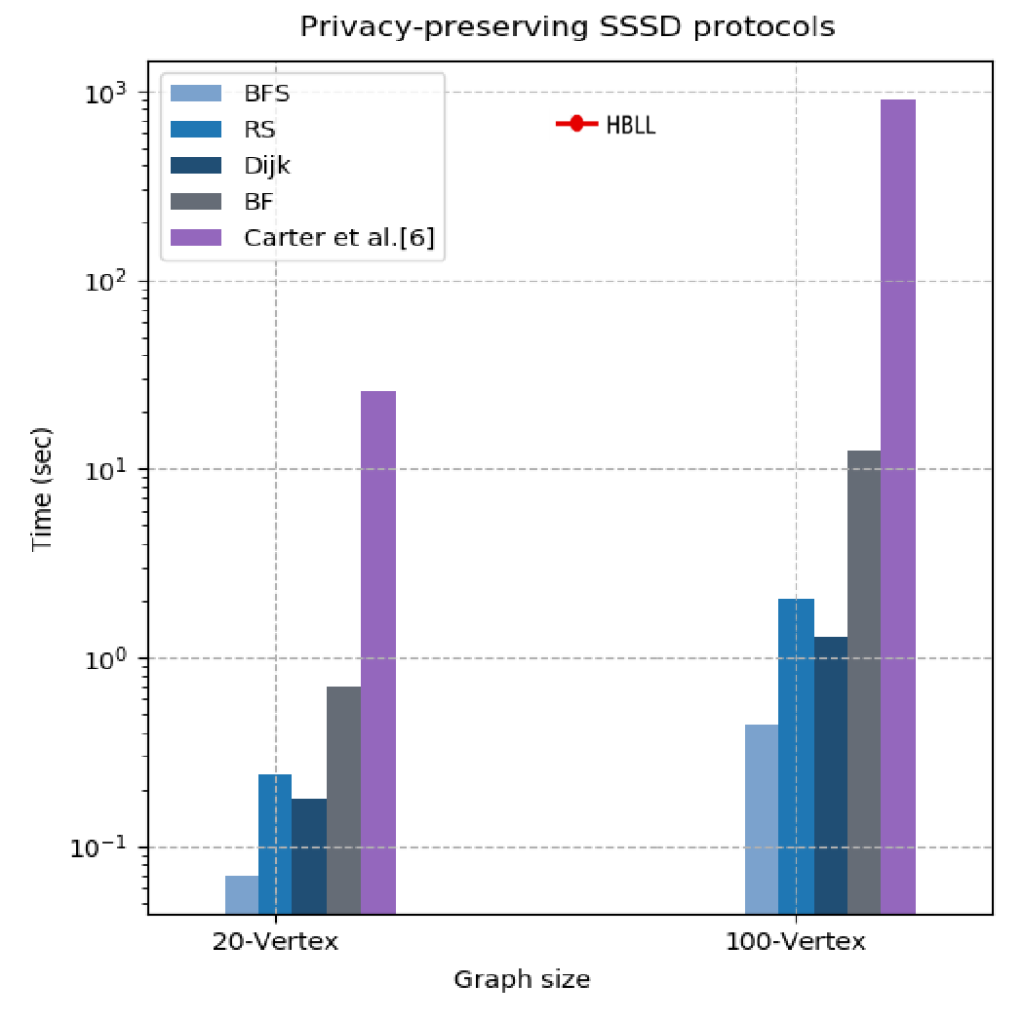Introduction:
Privacy-preserving computation is a crucial discipline that protects the privacy of confidential data while facilitating secure analysis. In graph problems, secure multiparty computation (SMC) presents a promising approach to performing these functionalities. This article delves into the notable advancements in privacy-preserving parallel algorithms recently introduced in a Ph.D. thesis. By integrating graph algorithms with SMC protocols, these novel protocols empower efficient and secure computation of diverse graph-related tasks.

Development of secure Protocols for main Graph Problems:
The thesis introduces novel secure protocols for graph problems, including the single-source shortest distance (SSSD), all-pairs shortest distance (APSD), minimum spanning tree (MST) and forest (MSF), and algebraic path computation (APC). These protocols address challenges with broad applications across diverse domains. For example, SSSD protocols contribute to efficient navigation systems by enabling optimal route planning and private distance calculations. APSP algorithms play a crucial role in network analysis, facilitating the determination of shortest paths between all pairs of vertices. MST and MSF protocols extend their impact beyond network optimization and find significance in various applications, including analyzing hyperspectral images, which are widely used in various fields, such as medical diagnostics and Mineral Exploration.


Efficiency through Single-Instruction-Multiple-Data (SIMD) Operations:
To achieve efficient privacy-preserving computation, the protocols make effective use of SIMD operations. SIMD operations allow simultaneous execution of computations on multiple data elements, thereby reducing round complexities in MPC protocols. By harnessing the power of SIMD, the proposed algorithms efficiently handle large private datasets and meet the computational demands of real-world applications. This optimization significantly contributes to the overall efficiency of privacy-preserving parallel computations.


Validation through Implementation and Evaluation:
The proposed protocols were implemented and extensively evaluated using the Sharemind SMC platform. A variety of graphs and network environments were used to simulate real-world scenarios and assess the performance of privacy-preserving computations. The results, speed-up analysis, evaluations, and benchmarking provide empirical evidence of the protocols’ efficiency and superiority compared to previous works.

Real Implementations and Impact:
The privacy-preserving protocols for single-source shortest paths and minimum spanning tree demonstrated significant reductions in running time, promising improved efficiency and scalability for privacy-preserving graph computations. Evaluation of privacy-preserving all-pairs shortest path protocols also contributed significantly to the thesis. The unique research approach provided valuable insights into the performance and scalability of privacy-preserving APSP computations, enabling further advancements. Additionally, the thesis introduced pioneering protocols for privacy-preserving minimum spanning forest and algebraic path computation (these protocols have never been addressed before), exploring previously uncharted areas. These contributions expand the scope of efficiently computed graph algorithms in a privacy-preserving manner, facilitating secure and privacy-preserving graph analytics.
Unleashing Unprecedented Speed: Revolutionizing Privacy-Preserving Graph Computation
We present remarkable benchmarking results that demonstrate a substantial improvement in the performance of privacy-preserving graph computation. Our SSSD protocol, introduced in this study, surpasses previous approaches, including the work by Carter et al. on a US presidential motorcade app scenario, with an extraordinary speedup of approximately 2000 times. This significant acceleration underscores the exceptional efficacy and superiority of our privacy-preserving parallel algorithms. These findings have the potential to revolutionize graph-based applications, offering unparalleled speed in a privacy-preserving manner. Our protocols establish a pioneering benchmark for privacy-preserving graph computations, ushering in a new era of innovation and real-world implementations. This breakthrough in performance sets a new standard in the field of privacy-preserving graph computation, advancing the state-of-the-art and inspiring further scientific exploration in this domain.


Conclusion:
In conclusion, the presented thesis makes substantial contributions to the field of privacy-preserving computation through state-of-the-art protocols and algorithms for parallel graph computations. These protocols offer efficient solutions to main graph problems and demonstrate superior performance compared to previous works. The research provides valuable insights into privacy-preserving parallel computations, advancing the state of the art in secure multiparty computation for graph algorithms. By combining privacy preservation with efficient parallel processing, these advancements pave the way for enhanced privacy and secure analysis of graph-based data across a wide range of applications.


